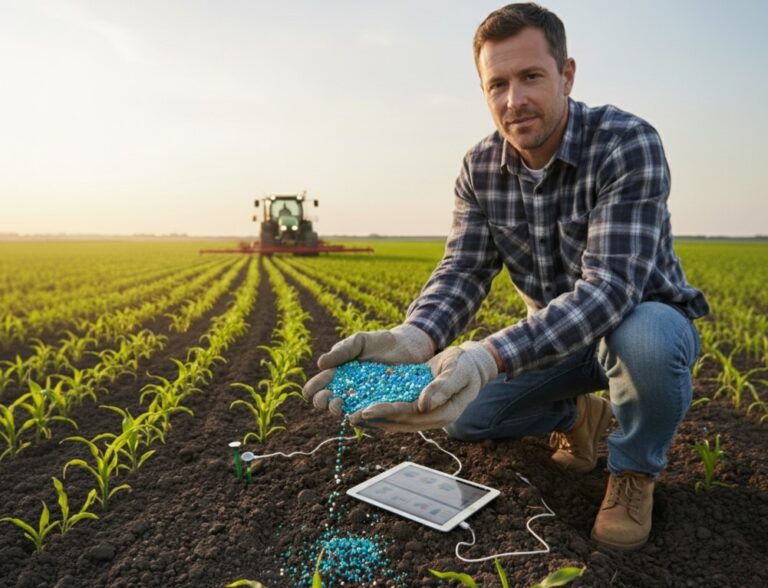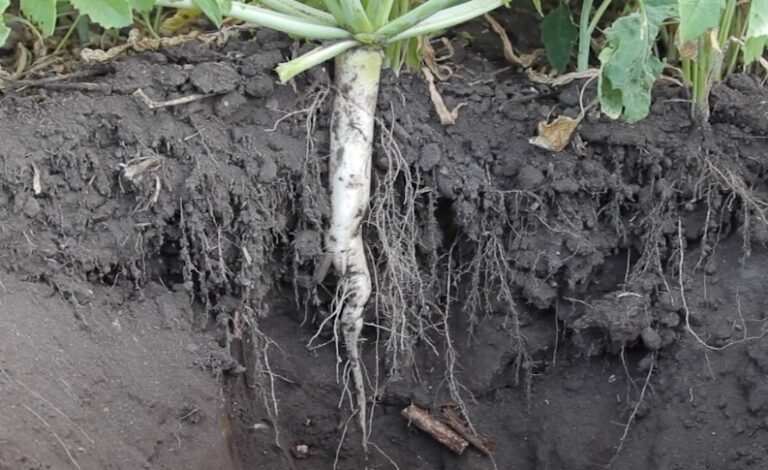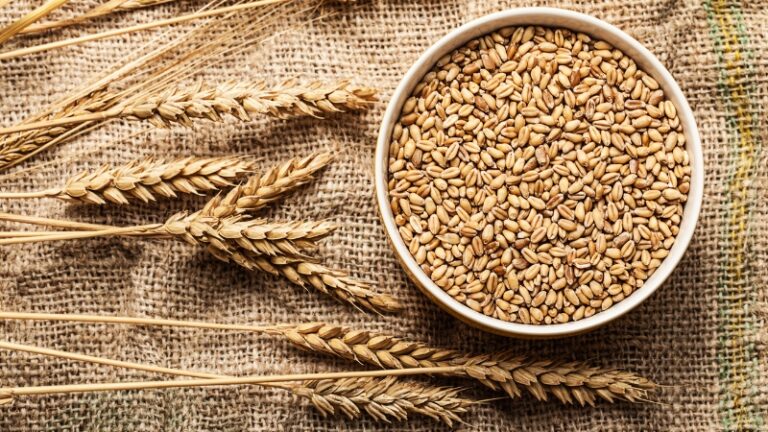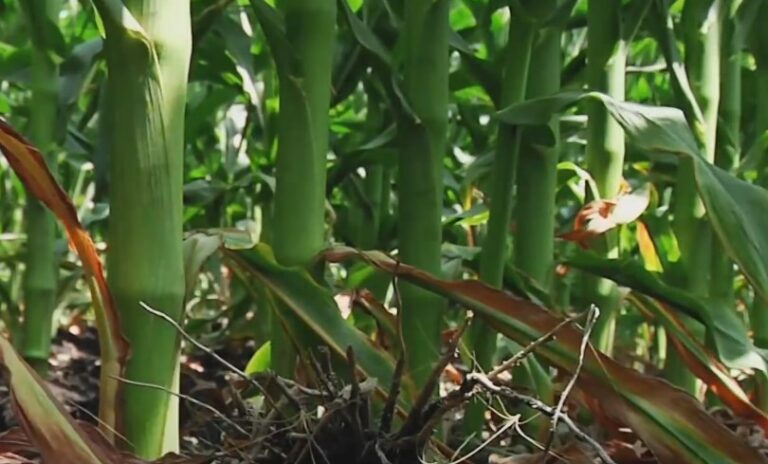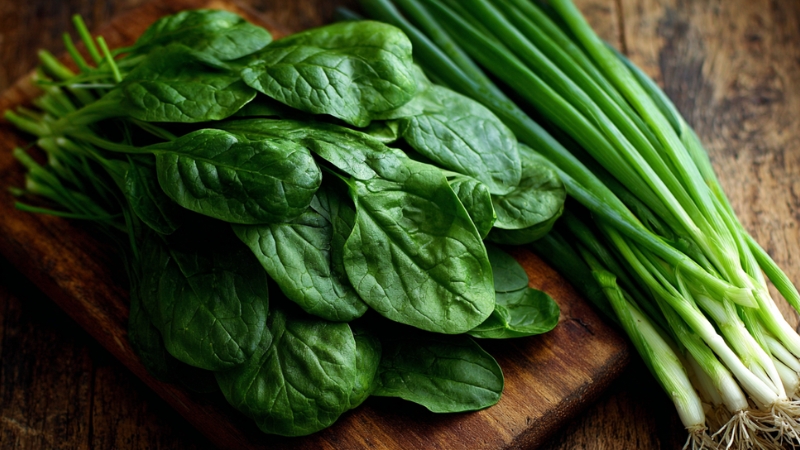Not all vegetables need deep soil to grow well. Some of the most productive crops for raised beds and container gardens have shallow root systems that stay within the top 15–30 cm (6–12 inches) of soil.
Knowing which vegetables fall into this category lets you maximize yield in small spaces, avoid root crowding, and reduce water waste.
This article breaks down the top shallow-rooted vegetables—how deep their roots go, what kind of care they need in raised or boxed gardens, and how to optimize your setup.
Whether you’re growing on a balcony, patio, or rooftop, these plants don’t require massive containers or expensive soil depth. With the right plan, even a 20 cm (8-inch) tall garden box can give you a full salad bowl.
1. Lettuce (Lactuca sativa)

Lettuce is a quintessential crop for small garden boxes because of its extremely shallow root system. Most of its roots stay within 10–15 cm (4–6 inches) of the soil surface, making it ideal for shallow containers.
It comes in several types: looseleaf, butterhead, romaine, and crisphead, all of which are fast growers and light feeders.
Because lettuce matures quickly (typically 30–50 days depending on variety), you can harvest multiple rounds in one growing season—even from a single container. It’s sensitive to heat, and warm temperatures can cause bolting, where the plant quickly grows tall and becomes bitter.
To prevent this, provide partial shade or grow in cooler seasons like early spring and fall.
Garden Box Tips
- Use well-drained, fertile soil rich in compost.
- Water frequently, as the roots are too shallow to tap deeper moisture.
- Sow seeds every 2–3 weeks to keep a continuous harvest.
2. Radish (Raphanus sativus)
Radishes are among the easiest and fastest vegetables to grow, and they’re extremely well-suited for shallow planters. Their roots grow down to 20 cm (8 inches) at most, and they prefer loose, friable soil that allows the roots to expand cleanly. If grown in compacted or clay-heavy soil, they will fork or split.
You can grow small varieties like ‘Cherry Belle’ or ‘French Breakfast’ in as little as 18–20 cm of soil, and harvest them within 3–4 weeks.
Radishes also make excellent intercropping companions for slower-growing crops since they mature so fast and don’t take up much space.
Garden Box Tips
- Avoid high-nitrogen soil; it encourages leaf growth at the expense of roots.
- Keep the soil evenly moist to prevent spongy or pithy roots.
- Thin seedlings to avoid crowding and stunted bulbs.
3. Spinach (Spinacia oleracea)

Spinach has a shallow but broad root system, reaching down about 20–25 cm (8–10 inches). It thrives in containers as long as the soil is nutrient-rich and consistently moist.
It prefers cool temperatures and will bolt quickly in the heat, so it’s best grown in early spring or autumn.
You can harvest spinach either as baby leaves for salads or allow it to mature into full-sized bunches. Unlike many shallow-rooted crops, spinach is a heavier feeder and benefits from compost or organic fertilizers during the growing period.
Garden Box Tips
- Avoid letting the soil dry out; spinach leaves become bitter when water-stressed.
- Apply mulch to help retain moisture and suppress weeds.
- Harvest outer leaves regularly to encourage continuous growth.
Arugula (also known as rocket) is a fast-growing leafy green with roots that rarely extend beyond 15 cm (6 inches) deep. It grows best in spring and fall when temperatures are mild and tends to bolt quickly in summer heat. Its spicy flavor intensifies as the plant matures or if water is lacking. You can sow arugula thickly in shallow trays or boxes and start harvesting leaves within 20–25 days. It thrives in partial shade and can even be grown indoors near a sunny window. Green onions—or scallions—are one of the easiest shallow-rooted crops to grow. Their roots only go down about 15–20 cm (6–8 inches), and they thrive in compact garden boxes or narrow planter rows. Because they grow vertically, they’re a great way to utilize tight spaces or borders. You can start them from seed or even regrow them from supermarket leftovers by planting trimmed bulbs. They do best in full sun with consistently moist soil, and they require little care after establishment. They produce large, crinkled leaves with a pungent, peppery taste that adds bold flavor to salads or stir-fries. These are excellent in raised beds or low-sided boxes where soil depth is limited but nutrients are well-managed. Because mustard greens grow bushy, spacing and airflow are important to reduce fungal issues. Bok choy (also called pak choi) has shallow but wide roots that spread horizontally within 20–25 cm (8–10 inches). It thrives in shallow boxes if there’s enough surface area. This Asian green matures quickly and offers an excellent yield in a small space. Baby bok choy can be ready in just 30–35 days. It prefers cooler temperatures and grows best in early spring or fall. The stalks and leaves are both edible and tender when harvested young. In our life ,we need vegetables to have a good healthy @meet the best vegetable called Swiss chard(Beta vulgaris L.cicla),which is very good source of vitamin (A,K,C) and mineral . pic.twitter.com/5iF2sP90xE — la nova Ornamenta (@Tuyishimirene01) November 4, 2020 The plant produces large, crinkled leaves with colorful stems, and it can be harvested continuously over several months. It tolerates both warm and cool conditions, making it more forgiving than spinach or lettuce. As a bonus, chard is visually striking and fits well in ornamental gardens or balcony boxes. Although kale has a moderately spreading root system, most of its feeder roots remain in the upper 25–30 cm (10–12 inches), which is manageable in medium-depth boxes. It produces abundant nutrient-rich leaves throughout the growing season and tolerates cooler temperatures better than most leafy greens. Kale can be harvested for baby greens early or allowed to grow into large, curly, or flat leaves. It’s cold-hardy and often survives into winter with some frost protection.4. Arugula (Eruca vesicaria)
Garden Box Tips
5. Green Onions (Allium fistulosum)
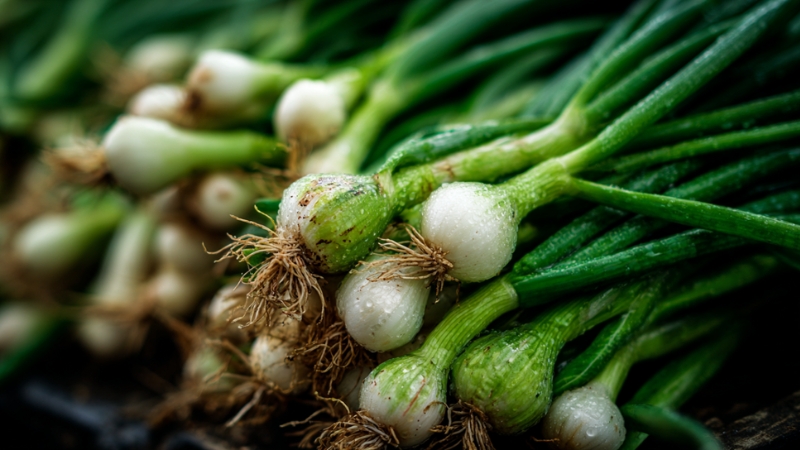
Garden Box Tips
6. Mustard Greens (Brassica juncea)
Mustard greens develop a root system similar in depth to spinach, topping out around 25 cm (10 inches). These leafy greens grow rapidly and are great for early spring or fall planting.Garden Box Tips
7. Bok Choy (Brassica rapa subsp. chinensis)
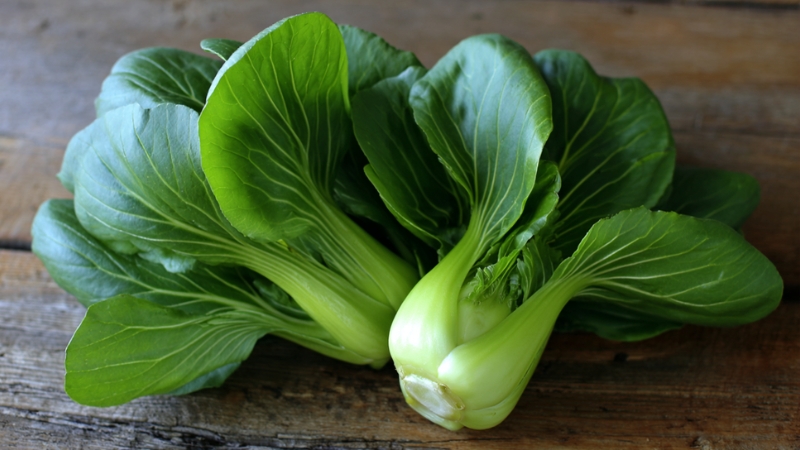
Garden Box Tips
8. Swiss Chard (Beta vulgaris subsp. cicla)
Swiss chard is incredibly adaptable and can grow in soil as shallow as 25–30 cm (10–12 inches). While its roots do spread wider than lettuce, they don’t go very deep, making it ideal for deeper boxes or planters.Garden Box Tips
9. Kale (Brassica oleracea var. sabellica)

Garden Box Tips
10. Bush Beans (Phaseolus vulgaris)
Bush beans are compact and self-supporting, making them ideal for shallow containers or boxes with 30 cm (12 inches) of depth. Their root systems are more lateral than deep, meaning they won’t overwhelm a confined space.
Unlike pole beans, they don’t need trellises and typically produce all their pods in a short window of time.
They prefer warm soil and benefit from full sun. Because they fix their nitrogen through nodules on their roots, they require minimal fertilization, especially in good soil.
Garden Box Tips
- Avoid overwatering—bush beans dislike soggy roots.
- Plant in rows across the box for easier harvesting.
- Replant every 3 weeks for continuous harvests.
Final Thoughts
Choosing shallow-rooted vegetables isn’t just about saving space—it’s about targeted, efficient gardening.
By focusing on crops that thrive in just 15–30 cm of soil, you can build ultra-productive garden boxes for balconies, rooftops, patios, and even indoor grow setups.
With proper soil, sunlight, and water, these crops will surprise you with how much they can produce in such a limited footprint.


